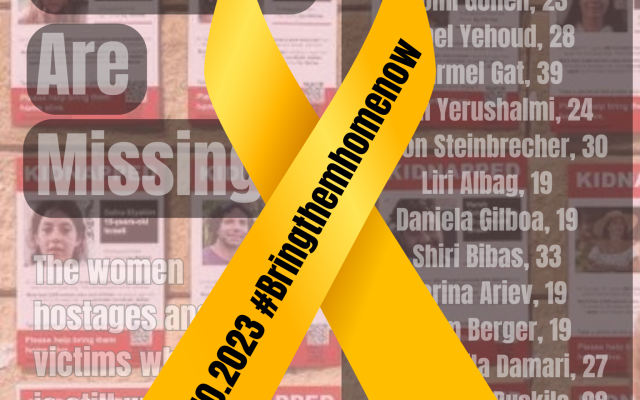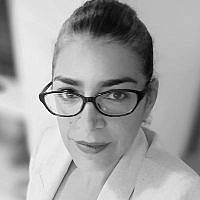The yellow chair: When art hurts
My favorite parts of being an artist-in-residence in Jewish spaces is the joy of creating: creating spaces, engaging my students through expressive outlets, or even something as simple as a bright bulletin board to catch our students’ eyes. As a Jewish educator, having an opportunity to be able to bring into life creative expressions of Jewish values that our students and families can directly relate to feels like a true blessing.
Except for this last installation. This one feels like it has been ripping at my heart and has frozen me to my core.
As we enter the holiday of Passover, we are reminded of one of the origin stories of Jewish liberation. Passover highlights the epitome of reaching freedom through unwavering resolution. Moses, a man with a speech impediment who has to rely on his brother, whom he has very little history with, goes in front of Pharaoh and demands that he let his people go from slavery. Granted, the story also includes a little extra “help” in convincing Pharaoh, but freedom prevails. Or at least it does for some time before Pharaoh decides that he no longer cares to give up his laborers and goes after them.
It’s frustrating really, how history (especially Jewish history) has found a way to repeat itself. And just as it does that, we have found ways to memorialize those moments in time through some type of art. From various iterations to the Haggadah that tells the story of our liberation from Egypt, to ornate versions of Megillat Esther, we have always found a way to document our trials and tribulations and turn them into creative expressions of the spirit and human resilience that has held us throughout time. In Jewish education, we have found ways to take this an extra step further by utilizing these creative representations to engage our students from a starting point where they can use multiple senses to fully grasp the story.
But, back to the current installation I am working on.
As Pesach approaches, so does the stark reminder that we are once again screaming to the world to “let our people go.” For our Intergenerational Women’s Seder, where we celebrate the voices of women such as Miriam who played an important role in the story, to the myriad of fighters and role models that have continued to exist today, I have been tasked to recreate an installation that is all too familiar to anyone who has recently visited Israel: the yellow chair that awaits for the hostages to come home. This yellow chair has been placed in various places, from restaurants to classrooms, representing the space saved for the hostages taken on October 7 as a sign of our hope that they will return home safely.
Being asked to create this installation for our annual Women’s Seder felt so straightforward: mark the spot, list the names, set the chair by the table to show our support for the women still held as well as the mothers, sisters, and daughters who will have one less person at their Seder table. And yet, I find myself grappling with the image that it keeps bringing into my mind: why are we begging the world to bring back those who were ripped from us from their beds, a party, their homes. Women, men, elderly, children…. Babies.
It feels so surreal sometimes to stand on the world’s stage trying to justify why we are so adamant about a hostage deal, and even going as far as offering deals that hold moral equivalency where we agree (yet again, for those with knowledge about the Gilad Shalit case) to exchange terrorists convicted of murder for the release of hostages who are kept in tunnels and dehumanized just for the very fact of being Israeli. Not even just Jewish, as there are those who are Arab Israelis and other nationalities being held hostage.
How does one make a chair, a yellow chair, the color that once signified joy, hold that much grief and hope all at once?
So here I am… creating graphics for a single chair, a single installation, there to remind us that while we were once free, that freedom is fleeting; That the world has changed its mind as to whether we are entitled to that freedom, leaving us with yet another artifact that we will use to show the world that we do not forget our story and those that have shaped us. And hopefully, that yellow at next year’s Seder will reclaim its freedom to express joy rather than emptiness once more.




